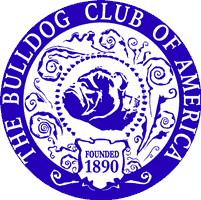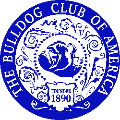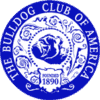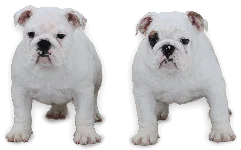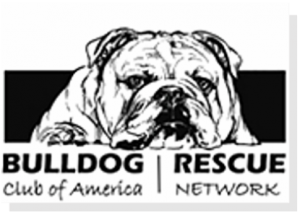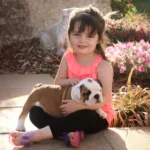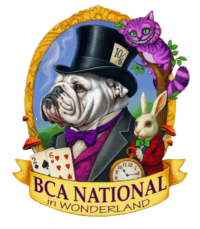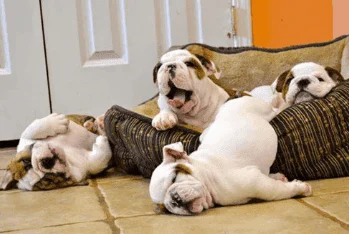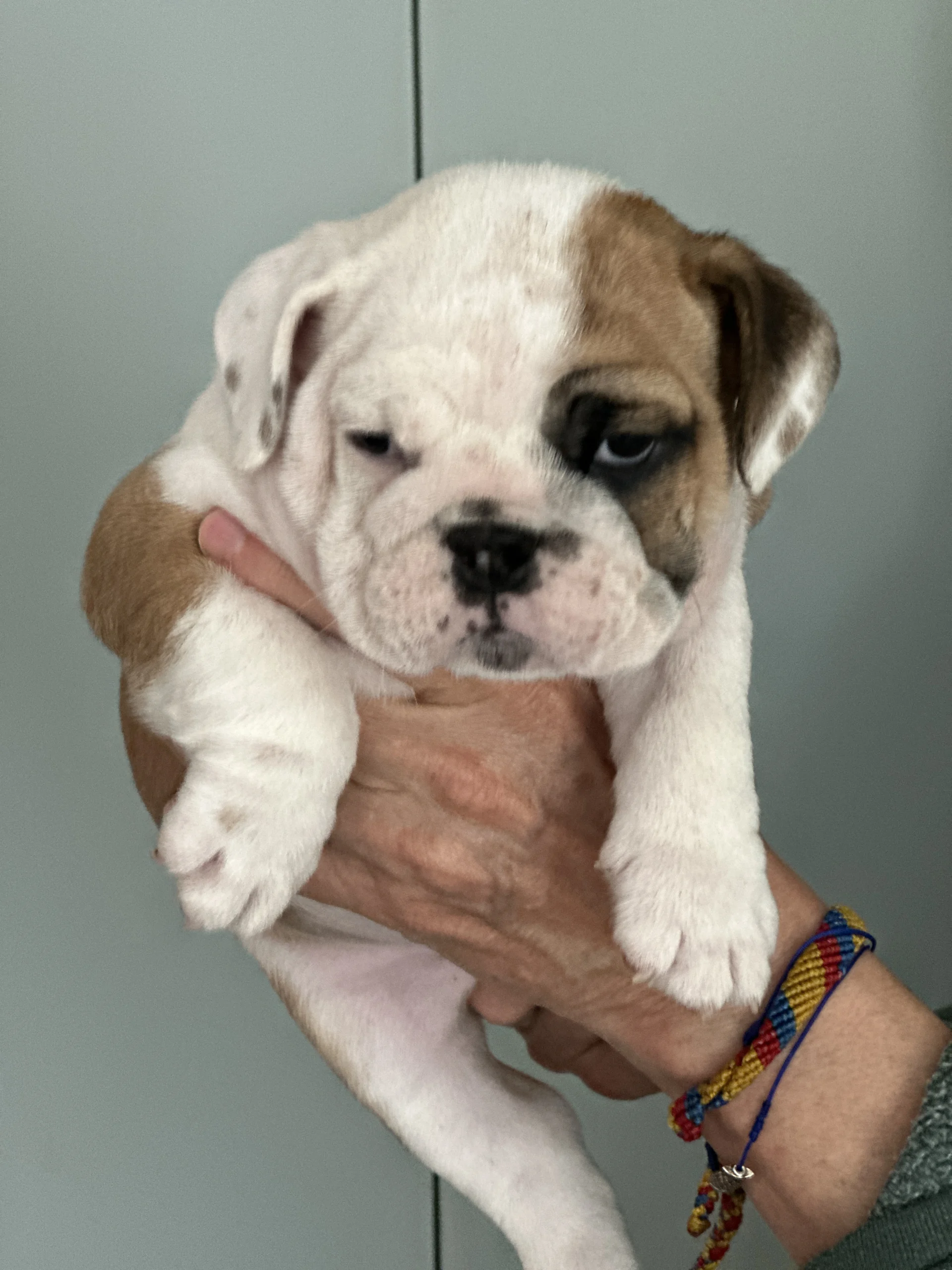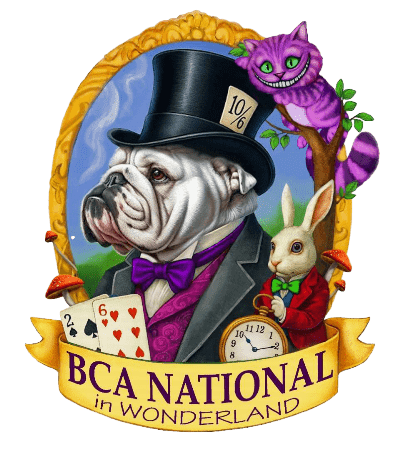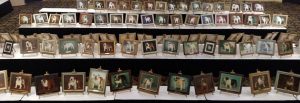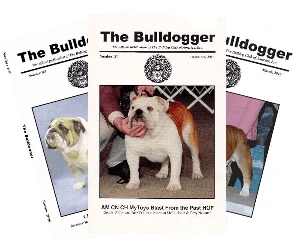Members Only Area
What is a pedigree?
In its simplest form a pedigree is a list of the ancestors of your dog. However, the more you know about the dogs in the pedigree that are behind your dog, the more you information you will have about the potential strengths and weakness of your dog. Reading pedigrees and understanding the information on them is a very important part of being an owner and potential breeder of a purebred puppy or dog.
For many first-time owners, knowing that the purebred puppy "has papers" is enough. Understanding what is on "the papers" may be a mystery or confusing. Depending on the source, or purchase point, the information on the puppy may be excellent, good or fair - or even worse.
The basic format of a pedigree is the same for all animals, even people. Pedigrees are read across the page from left to right. The first individual listed is the one you are focusing on and is on the left. The dog's complete registered name and registration number should be listed. Depending on the dog and the health testing done, you may find conformation or performance titles listed, as well as CHIC, OFA, CERF or other health testing performed to show that standardized health testing beyond simple veterinary examinations have been done and passed.
The first generation behind that individual in the pedigree, composed of the parents of the individual, is in the next column. The succeeding columns are the grandparents, the next the great-grandparents. What makes reading pedigrees informative is looking for patterns of ancestors in a dog's background.
There are three basic patterns of breeding animals: inbreeding, line breeding and outcrossing. While there are differences in the way some people differentiate among these types, for now consider an inbred pedigree to be one where the sire and dam of the dog are a parent-child, sibling or half-sibling breedings.
A line bred pedigree is usually defined as the mating of dogs that are related to the same ancestor or ancestors within four generations. When a dog is described as "line bred," it indicates that they are related through both the sire and the dam to one or more ancestors. Unless the same ancestor is behind both the sire and dam, it is not really a line bred pedigree, although each parent may individually be a line bred dog on different lines.
An outcrossed pedigree is one in which there are no common ancestors behind the sire and dam lines in the first four generations. Since the effect of an ancestor’s genetic makeup drops off significantly with each generation they are removed from the individual, there is not a great influence of dogs beyond the fourth generation. An ancestor appearing in the fifth generation is only one of 62 ancestors in the five-generation pedigree. Therefore their proportionate influence on the descendant is diluted compared to dogs occurring earlier in the pedigree.
Why would a breeder inbreed or line breed? Most breeders either inbreed or line breed to some extent to improve their lines by combining animals not only similar in their characteristics, but also by narrowing the gene pool in the pedigree to a few closely related lines of descent from outstanding dogs and bitches. Inbreeding and line breeding narrow down ancestors from which your dog gets his traits, although to different degrees.
One goal of breeding is to lock into the current generation those positive traits found in the ancestors. Although line breeding, and to a greater extent inbreeding, can increase the expression of recessive traits, some of which may be undesirable, it does have the advantage of increasing the probability of revealing these hidden traits. A inbred or tightly line bred dog will be less likely to have hidden surprises in their genetic makeup because the recessive traits are more likely be expressed as the same genes from the ancestor are combined in the later generation.
The problem is that we really are only beginning to understand the complex inheritance of many genetic traits and most of what we have to go on is the “look” of the dog – its phenotype - not the genes themselves – its genotype. The simple Mendelian inheritance we were taught in school has little relationship to the multi-gene inheritance with varying degree of expression found in many traits important to maintaining breed characteristics. So to some extent, the breeder's best intentions do not always result in the expected outcomes. The good breeder learns from these breedings, gaining knowledge of issues in their lines, and alters their breeding program.
Now, as you look through all the names in reading your pedigree, take time to investigate more than just the surface information - dig a bit deeper into the abbreviations, the numbers, kennel names, etc. Exactly what do you see? What do you know about these dogs?
By itself, a pedigree is of little value without knowing anything about the dogs in the pedigree. It can tell you if the dogs are titled in conformation or performance events and can inform you about the degree of inbreeding, line breeding or outcrossing in your dog, but it does not tell you if that is a good or bad thing. Your dog is a real dog with inherited traits and not just a dog on paper. Without knowing something about the appearance, temperament, health and longevity of the ancestors of your dog, you really don’t know much from looking at a piece of paper.
Finding out information about the dogs behind the pedigree is the first step to reveal its hidden meaning. If all that was necessary to produce top quality puppies was to breed to the top winner of the day, everyone could do it and the show rings would be full of nothing but superior specimens that generally resembled each other. Breeding to the top winners is not always the best way to succeed, since the top winner may not be a consistent producer, much less a top producer. Large numbers of litters may result in a large number of champion offspring, but you only own one puppy or have only one bitch to breed and you want to increase the percentage of her puppies that will be top quality. Most of us do not have the number of bitches that will allow us to go for high number in hoping to get that really top dog.
Understanding pedigrees in detail boils down to the owner’s ability to do a bit of research. The time to start is before you buy the dog. You should be asking lots of questions of the breeder about their new puppy - pointed questions about the breed of dog, potential health problems of this breed and in the breeder’s lines, training issues, relatives (past and present), etc.
The pedigree only guarantees the bloodlines of the dog - a record of the ancestors whose genes contribute to the dog we are looking at. Knowing these dogs in the pedigree is necessary to really understand the meaning of the pedigree. The foundation of breeding purebred dogs starts with the physical and health characteristics of the animals themselves and not pedigrees alone.
As a breeder, you should be able to able to make a fair prediction as to which ancestors helped produce the outstanding traits in your bitch and should look for a dog whose strengths complement hers and offset her weaknesses. Knowing the dogs behind your bitch, you can make an intelligent guess as to which ancestor was significant in producing the qualities you value. By evaluating the breeding dog and bitch in this way (via his or her pedigree and the dogs behind them) you get a better idea which animals you should choose to mate in order to intensify or suppress the existing traits. Selecting matings based only on pedigrees without thinking about physical appearance of your dogs and their ancestors will usually produce more dogs with notable faults, ultimately resulting in a failed breeding program.
If you purchased your purebred from a BCA or Member Club breeder referral, you probably saw or received copies of photographs of some of the ancestors of your puppy as well as talked with them breeders about the traits of several of these past dogs.
If you study pedigrees for long, you will see some definite patterns in most pedigrees that are line bred. Other than those mentioned earlier - parent-child, siblings or half-siblings - the other patterns most frequently seen are grandfather to granddaughter, grandfather to double granddaughter, son to granddaughter and son to double granddaughter, grandson to granddaughter, and grandson to double granddaughter.
All breeds of purebred dogs and all lines within a breed evolved from a common ancestor. The difference in appearance between the breeds and lines is due to selection in the offspring of specific traits desired by the breeder. Even with the same standard in mind, no two people will select for exactly the same look within a breed. While Bulldogs are a “head” breed, differing interpretations of the standard lead to the selection for slightly different traits that produce different looks over time. Each line has its exceptionally good characteristics and its faults, both of which it reproduces fairly consistently. Experienced breeders who have studied the breed can frequently identify the kennel a dog comes from by the dog’s appearance. The value of a pedigree is that a knowledgeable person can learn about hereditary tendencies resulting from choosing to breed to that line.
If the traits the breeder wants to lock in are in a top-producing female, an inbreeding of mother to son might be tried to multiply the bloodline of the dam. If they were in a male, the sire might be mated to the daughter. Mating brother to sister should preserve the bloodlines from both sire and dam equally, but in practice this best works where previous breedings of the sire and dam prove very successful in retaining the desired traits. Remember, any close breeding not only increases the chance of doubling up on the strengths of the line but. also, upon its weaknesses - apparent or hidden.
When researching a pedigree for breeding purposes, you should look for an animal that is inbred or line bred on a great individual possessing the traits needed in your line. In selecting to breed, you should, therefore, line breed on the individual in your dog's pedigree that most closely approaches your ideal - whether that be a dog or a bitch – or which has fixed traits that need to be addressed in the breeding program.
If you line breed or inbreed on an average dog or bitch, you will rarely produce exceptional quality. Only those animals that are superior should be selected for inbreeding or line breeding. You need to be careful in selecting the sire and dam.
However, superior breeding animals are not easy to obtain. Most breeders either keep them for themselves or place them with people they know in the breed. Frequently, a person starts with what is usually considered an average dog or bitch. The best breeding practice to take in this situation would be to mate the bitch to a stud whose structure more closely meets the ideal than hers, especially in the areas of her weakness. This is "breeding up" through him. With the resulting female produce, breeding back into the sire's side of the pedigree can begin to fix those positive traits.
Careful thought needs to be in selecting the breeding female. It is the owner of the bitch that controls the mating; the sire owner only has the options to do the breeding or not, but can’t shape the breeding program in most cases. A bitch will have fewer produce in her lifetime than a male can have get. Where a popular male can be the sire of hundreds, the female becomes the dam of only a few. The number of “stars” resulting from either probably won’t be hugely different, especially after taking the number of offspring of each into account. Since it is much easier to trace a distinctive set of traits among the fewer few descendants of one dam, it is possible to make more valuable use of her influence. With a frequently used stud, you may have a wider variety to choose among, but as the stud owner, all you can do is refuse a mating – you can’t create one.
Looking at an outcrossed pedigree, you should be able to determine the breeder's line type and what traits are fixed in that line. The initial results of an outcross of two very good examples of the breed within different lines can exhibit many of the good points of both lines. Others, seeing these puppies may attempt breeding to the sire to get similar results. But they are starting with different bitches from different lines and will probably experience different results. Even the following generations of your breeding may show less uniformity as the genetic makeup shifts.
After you outcross, most breeders will go back into their own line in the next generation. This is done to maintain the strengths and look of their lie after introducing an outcross. The thoughtful use of inbreeding, and outcrossing can help produce a health dog that approaches the breed standard.
